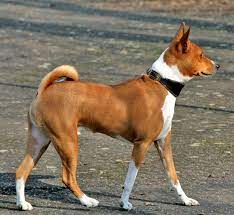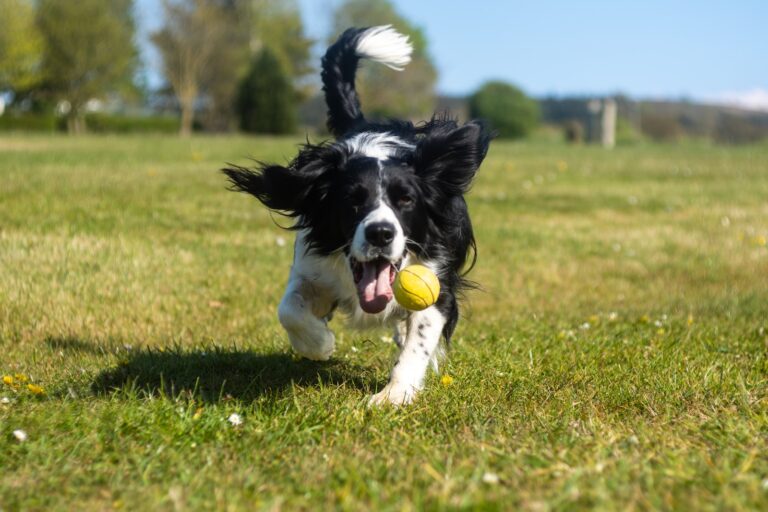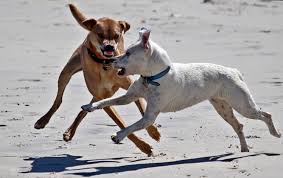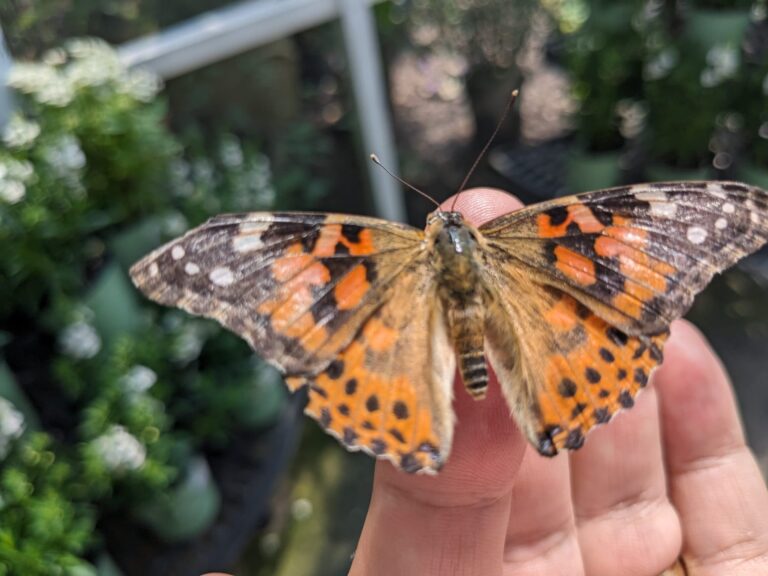The Basenji: Unraveling the Enigmatic Origins of One of the Oldest Known Dog Breeds
The Basenji, fondly referred to as the “barkless dog,” represents a breed that encapsulates the profound historical connection between humanity and its canine companions. The Basenji’s “barkless dog” characteristic is because it lacks the typical vocalization associated with barking in most other dog breeds. Instead of barking, Basenjis produce a unique range of vocalizations that include yodels, howls, and chortles. This distinctive feature is due to the unique structure of their larynx, which limits their ability to produce traditional barking sounds.
The Basenji’s lack of barking is not a result of being mute or voiceless; rather, it is an inherent characteristic of the breed. While they do not bark, their vocalizations are no less expressive, and they use these sounds to communicate with their owners and other dogs. This feature has made them particularly appealing to people in regions where quiet dogs are preferred, such as certain African communities where the Basenji has its origins.
It is essential for Basenji owners to understand and appreciate their breed’s unique vocalizations, as these sounds are an integral part of their communication and expression. While they may not bark, Basenjis are by no means silent, and they can be quite vocal when excited, alert, or seeking attention.

Its very existence serves as a dynamic testament to the enduring relationship that has evolved over the course of centuries. In this captivating exploration of the Basenji, we embark on an engaging voyage deep into the heart of Africa’s luxuriant jungles, where the roots of this exceptional breed extend astonishingly far back in time.
Origins and Deep Roots:
To gain a comprehensive understanding of the Basenji’s remarkable historical journey, we must transport ourselves to the heart of Central Africa, specifically the regions that have become integral parts of the Democratic Republic of Congo today. In these ancestral lands, deeply entrenched in the tapestry of time, the Basenji emerges as a legendary figure, celebrated for its significant role as an indispensable hunting partner.
The dense jungles of Central Africa, where sunlight filters through a sprawling canopy, provided the backdrop for the Basenji’s intriguing origins. Here, amidst lush foliage and the evocative calls of exotic wildlife, the Basenji earned its place as a faithful companion to indigenous peoples. Early human communities discerned in the Basenji a canine ally unparalleled in its hunting abilities, a creature that would not only become a valued hunting assistant but also an esteemed member of their tribes.
The Basenji’s reputation rested on its exceptional skills, particularly its mastery of navigation within challenging environments. It navigated through dense undergrowth and conquered terrain that posed formidable challenges, exhibiting a remarkable agility that impressed even the most seasoned hunters. Its tracking skills, honed through generations, formed the cornerstone of its renown.
Notably, the Basenji’s proficiency extended to flushing out small prey, displaying its ability to pinpoint the elusive hiding spots of birds and squirrels. This agility allowed it to traverse the most impenetrable of forests, ensuring that its prey had no opportunity for escape.
In the context of these ancient lands, where humanity’s connection with the natural world was deeply intertwined, the Basenji exceeded the role of a mere hunting tool. It played an essential part in tribal culture and everyday life, providing protection, sustenance, and steadfast companionship. Its loyalty and devotion to its human companions forged a bond that exceeded the practical value of its hunting skills.


As we delve further into the rich history of Central Africa, we unravel the Basenji’s place among the earliest canine allies of humanity. This breed was not just adept at navigating dense jungles and tracking game; it also ingrained itself into the essence of indigenous societies, epitomizing the profound connection that exists between humans and their steadfast animal companions. Amidst this lush and ancient backdrop, the Basenji’s journey began, etching an indelible mark on the chronicles of canine history—a narrative that continues to captivate and inspire, resonating with the deep and enduring bond between humans and their loyal canine counterparts.
The Enigmatic Link to Ancient Egypt:
The Basenji’s origins in Africa are unquestionable, but its historical significance reaches even further. In the historical records of ancient Egypt, we have unearthed compelling evidence. Among the sacred tombs and intricate artworks dating back to 4000 BCE, we have uncovered depictions of dogs that bear an uncanny resemblance to Basenjis. This discovery is nothing short of captivating, implying that these graceful canines did not restrict themselves solely to Africa’s heart but rather played a pivotal role in the daily lives of ancient Egyptians. They did not merely serve as protectors; they also functioned as beloved companions, thereby cementing their status as one of humanity’s most ancient dog breeds.
In this comprehensive guide, I will introduce Basenji’s size, weight, coat colors, and availability in the United States, along with an exploit ration of its elegant physique.


Size: The Basenji typically falls within the small to medium-sized category. Males typically stand between 16 to 17 inches (41 to 43 cm) at the shoulder, while females are slightly smaller, ranging from 15 to 16 inches (38 to 41 cm).
Weight: Basenjis are relatively lightweight for their size, with males weighing between 24 to 26 pounds (11 to 12 kg), and females typically weighing between 21 to 24 pounds (9.5 to 11 kg).
Basenjis display an array of striking coat colors that contribute to their aesthetic appeal. Common coat colors include:
| Red: This coloration varies from rich chestnut to deep mahogany. | Black: Solid black Basenjis are quite striking, displaying a glossy, jet-black coat | Tricolor: These Basenjis have a combination of black, red, and white in their coat patterns, often resembling a classic tri-color appearance. | Brindle: Brindle Basenjis display a striking striped pattern, typically alternating between black and red stripes on a lighter background. |
Physical Features:

The Basenji possesses a set of distinctive physical features that contribute to both its aesthetic appeal and functionality. Its gracefully curled tail is a standout characteristic, not only enhancing its visual allure but also playing a functional role by aiding balance and agility during rapid movements. Furthermore, the Basenji’s erect ears are noteworthy, contributing to its alert and watchful demeanor. These ears excel at sound localization, making the breed highly adept at detecting even subtle noises in its environment.
In terms of its coat, the Basenji sports a short, glossy variety that reflects light with a radiant gleam. This sleek coat offers some protection from environmental elements while also assisting in temperature regulation during physical activity. Thankfully, Basenji coat care is relatively low-maintenance, with regular brushing to remove loose hair and occasional baths typically sufficing to keep them looking their best.
Exercise Needs:
Basenjis, known for their active and energetic nature, consider regular exercise a vital part of their well-being. To keep them happy and healthy, daily activities like walks, playtime, and mental stimulation are essential to stave off boredom.
However, it is crucial to exercise caution when considering off-leash time. Basenjis possess a strong prey drive and they may be inclined to chase small animals if allowed to roam freely. To ensure their safety and the safety of wildlife, it is paramount to provide a secure, fenced area where they can enjoy off-leash play without posing a threat to other creatures.
Health Considerations:
Basenjis are prone to certain health issues that prospective owners should know. Fanconi Syndrome is a kidney disorder that can affect this breed, making regular veterinary check-ups crucial to monitor kidney function and ensure early detection, which is vital for effective management. Additionally, like many dog breeds, Basenjis can be susceptible to hip dysplasia, a genetic condition that affects the hip joints. Responsible breeding practices can help reduce the risk of hip dysplasia in Basenjis. Progressive Retinal Atrophy (PRA) is another concern, as it constitutes an inherited eye disease that can lead to vision loss. To safeguard their vision, Basenjis should undergo regular eye exams conducted by a veterinary ophthalmologist. Lastly, thyroid issues may also afflict some Basenjis, potentially affecting their overall health. To address this concern, it is advisable to conduct regular thyroid function tests.
Training and socialization play pivotal roles in nurturing a well-adjusted Basenji companion. While Basenjis are undoubtedly intelligent, their independent and occasionally stubborn nature requires an approach to training that emphasizes consistency and positive reinforcement. This approach is crucial for ensuring their cooperation and obedience to commands, allowing them to be well-behaved and responsive members of your family.

Equally vital is the process of socialization, which should commence early in their development. Introducing Basenjis to a diverse array of people, animals, and environments at a young age is essential. This exposure not only fosters sociability but also helps prevent potential issues related to fear or aggression as they mature. A well-socialized Basenji is more likely to be confident and comfortable in various situations, making them a more harmonious companion in your everyday life..
Temperament:
Basenjis exhibit a unique blend of independence and loyalty that defines their temperament. While they are renowned for their independent nature, they can sometimes appear aloof when encountering strangers. However, their loyalty to their families is unwavering, and they often form deep bonds with their loved ones.
In terms of their well-being, Basenjis require not only physical exercise but also mental stimulation. Given their intelligence, engaging them in puzzle toys and challenging activities is essential to keep their minds sharp and their spirits high.
Owning a Basenji entails a long-term commitment encompassing various responsibilities. Beyond the joy they bring, owners must prepare to undertake the ongoing tasks of feeding, grooming, providing exercise, and ensuring healthcare throughout their dog’s life.. This commitment is integral to fostering a happy and healthy life for your Basenji companion
Basenjis are indeed available in the United States, but they are not as common as some other breeds. Potential owners interested in acquiring a Basenji should reach out to reputable breeders or consider adoption through Basenji rescue organizations. It is essential to conduct thorough research and choose a responsible source when obtaining a Basenji to ensure a healthy and well-socialized companion.
As we conclude this exploration into the captivating world of the Basenji, it is essential to place this breed within the broader context of canine history. While the Basenji rightfully claims a position as one of the most ancient known dog breeds, it is crucial to acknowledge that the story of dog breeds is a vast and intricately woven tapestry, meticulously crafted over millennia through the art of selective breeding by humans. Consequently, determining the indisputable “oldest” breed remains a multifaceted challenge.
Nevertheless, the Basenji, with its timeless charm and ancient lineage, serves as an emblematic representation of the deep and enduring connection that has bound dogs and humans together across the epochs. It reminds us of the profound role dogs have played in our shared history, underscoring their enduring significance in our lives throughout the ages.






